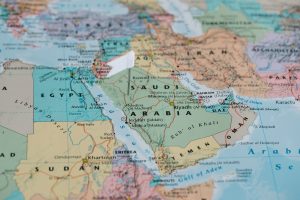How much food is sourced locally in Saudi Arabia ? “In Saudi Arabia, the value-added agriculture sector attains 63% self-sufficiency, sourcing food locally.”
In recent years, the concept of sourcing food locally has gained significant momentum, not only as a means of promoting sustainable practices but also as a way to ensure food security.
Saudi Arabia, a country known for its vast deserts and arid climate, has been gradually increasing its efforts to source a larger portion of its food locally.
This article delves into the various aspects of how much food is sourced locally in Saudi Arabia, exploring the challenges, initiatives, and the overall impact on the country’s food supply.
How much food is sourced locally in Saudi Arabia ?
Saudi Arabia’s harsh climate and limited water resources have historically posed challenges to domestic food production. This has led to a heavy dependence on food imports to meet the needs of its rapidly growing population.
However, recent shifts in global food trends and the growing emphasis on self-sufficiency have prompted the country to explore the potential of local food sourcing.
Importance of Local Food Sourcing
Local food sourcing offers a range of benefits, including reduced reliance on international markets, improved food security, and the promotion of sustainable agricultural practices. By producing food locally, Saudi Arabia aims to decrease its vulnerability to supply chain disruptions and price fluctuations in the global market.
Challenges in Local Food Production
The arid climate, scarcity of arable land, and limited freshwater resources are significant hurdles to local food production. The intense heat and water scarcity make traditional farming methods challenging. However, innovative agricultural practices are being explored to overcome these challenges.
Government Initiatives and Policies
The Saudi government has launched various initiatives to boost domestic food production. One such initiative is the “Salad Greenhouses” project, which focuses on growing vegetables hydroponically in controlled environments. Additionally, subsidies and incentives are provided to farmers and agribusinesses to encourage investment in local agriculture.
Agricultural Innovation and Technology
Technological advancements play a crucial role in enhancing local food production. Vertical farming, drip irrigation systems, and desert farming techniques are being employed to maximize crop yields while minimizing water usage. These innovations are transforming Saudi Arabia’s agricultural landscape.
Key Locally Sourced Food Products
Saudi Arabia primarily focuses on producing fruits, vegetables, dairy products, and some grains locally. While the country may not be entirely self-sufficient, significant progress has been made in increasing the percentage of locally sourced food items.
Economic and Environmental Benefits
Apart from bolstering food security, local food sourcing has economic and environmental advantages. It creates job opportunities in rural areas, reduces transportation emissions associated with food imports, and conserves water resources, which are crucial in the desert environment.
Community Engagement and Awareness
Raising awareness about the importance of local food and supporting local farmers is crucial. Farmers’ markets, community-supported agriculture programs, and educational campaigns contribute to fostering a culture of sustainable consumption.
Barriers to Scaling Up Local Sourcing
While there’s a positive momentum towards local food sourcing, challenges such as limited access to financing, a shortage of skilled labor in agriculture, and the need for continued research persist. Addressing these barriers is essential for the sustainable growth of the local food sector.
Collaborations and Partnerships
Collaboration between the government, private sector, and research institutions plays a vital role in advancing local food production. Partnerships can lead to knowledge sharing, technology transfer, and more effective implementation of sustainable practices.
The Role of Traditional Farming
Traditional and indigenous farming practices have stood the test of time in arid regions. Incorporating these practices with modern techniques can enhance the resilience of local agriculture and contribute to preserving cultural heritage.
Future Outlook and Sustainability
The future of local food sourcing in Saudi Arabia looks promising. With continued investment in technology, research, and policy support, the country can further increase its self-sufficiency in food production and become a model for sustainable agriculture in challenging environments.
How Much Food Is Sourced Locally In Saudi Arabia FAQs
1. Is Saudi Arabia aiming to become entirely self-sufficient in food production? While complete self-sufficiency is a challenging goal due to the country’s unique environment, Saudi Arabia is working to significantly increase its locally sourced food supply.
2. What are some successful examples of local food production projects in Saudi Arabia? Projects like the “Salad Greenhouses” and vertical farming initiatives have showcased successful local food production methods.
3. How can consumers contribute to supporting local food sourcing? Consumers can support local food sourcing by purchasing from farmers’ markets, participating in community-supported agriculture programs, and making informed choices about their food purchases.
4. Are there any cultural considerations in promoting local food in Saudi Arabia? Yes, promoting traditional farming practices can help preserve cultural heritage while promoting sustainable agriculture.
5. How can technology continue to drive the growth of local food sourcing in the country? Technological advancements such as precision agriculture, hydroponics, and efficient irrigation systems can help maximize yields and conserve resources in local food production.
Conclusion
In conclusion, Saudi Arabia’s journey towards sourcing more food locally is an impressive step towards food security and sustainable agriculture. The combination of technological innovation, government support, and community involvement lays a strong foundation for the growth of the local food sector.
Recent Posts
Platinum credit cards in the UK are designed for people who want premium benefits, flexibility, and financial power in one product. They typically combine rewards, travel protection, lifestyle perks,...
The Gold Card is designed to offer a premium pathway to residency, mobility, and economic opportunity through verified financial contribution. It represents a shift toward value-based access rather...